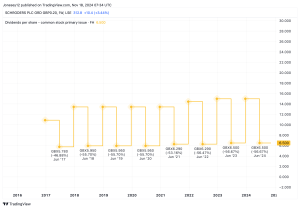Dwelling coverage is one of the most important parts of a home insurance policy. If your house burns to the ground or a fallen tree crushes your roof, dwelling coverage would pay to help you repair or rebuild.
What is dwelling coverage?
Dwelling coverage is the part of a homeowners policy that pays to repair damage to the structure of your home, or to rebuild it if it’s destroyed. Dwelling insurance will cover you up to the limit of your policy.
Your home’s structure comprises the roof, foundation, floors, doors, windows and walls. Dwelling coverage also generally includes anything attached to the structure, such as garages, porches, decks, and built-in appliances and fixtures. However, it doesn’t include your belongings, unattached structures (such as a shed) or the land your home sits on.
In a condo insurance policy, dwelling coverage works differently. Most condo residents own only their own unit, not the building itself, so your policy’s dwelling insurance doesn’t need to cover things like the roof or outer walls. But depending on what your association’s master policy covers, you may need dwelling coverage for built-in cabinets, appliances and floors within your unit. Learn more about condo insurance.
Dwelling insurance is sometimes called Coverage A because it’s often the first type of coverage listed in a homeowners policy.
Is dwelling coverage required?
Though you’re not legally required to buy dwelling coverage, your lender will likely require it if you have a mortgage. This helps protect the lender’s financial investment, but it also protects your own. Imagine having to repay hundreds of thousands of dollars on a mortgage for a house that burned down, with no insurance money to rebuild it.
You may see a mortgage lender require “hazard insurance,” but don’t worry. That’s generally the same thing as dwelling coverage, and buying a standard homeowners policy will likely fulfill the requirement. (You may also need to buy flood insurance if you’re in a high-risk zone.)
If you don’t have a mortgage, you could conceivably go without dwelling coverage. But it’s probably not a wise idea unless you could afford to rebuild your home yourself after a catastrophe.
What does dwelling insurance cover?
Dwelling insurance covers a number of disasters, often called “perils” in your policy. Most homeowners insurance policies cover any disaster that isn’t specifically excluded. This is known as “open perils” or “all risks” coverage. You’ll typically have coverage for perils like:
-
Fire, lightning and smoke.
-
Wind and hail.
-
Vandalism.
-
Weight of ice or snow.
-
Volcanic eruption.
As long as your homeowners policy doesn’t exclude a given disaster, your dwelling insurance should cover it.
However, condo policies and rarely sold homeowners policies known as HO-1 and HO-2 policies may have less generous dwelling coverage. Known as “named perils” coverage, these types of insurance may cover your dwelling only for perils listed in the policy. The disasters listed above are generally included.
Condo owners may be able to upgrade their policies to “open perils” coverage if they want insurance for a broader range of disasters.
What does dwelling insurance not cover?
There are quite a few disasters your dwelling insurance won’t cover, though extra coverage may be available for purchase. Here are a few examples.
Flooding
If a hurricane pounds your area with rain or a nearby river overruns its banks, your dwelling coverage usually won’t pay for any resulting water damage to your home. Those at risk can buy flood insurance through the federal government or a private company. See how to choose the best flood insurance.
Earthquakes, landslides and mudslides
Homeowners policies generally won’t cover damage due to “earth movement,” which includes earthquakes, landslides, mudslides and sinkholes. Additional coverage may be available for these disasters.
Water backup
Most homeowners insurance won’t cover damage that results from a failed sump pump or a backed-up drain. If you’re interested in this coverage, you can typically add it via an endorsement to your policy.
Maintenance or wear and tear
Homeowners insurance is designed to help with sudden accidents, not routine maintenance issues. Your dwelling coverage is unlikely to help with things such as a foundation that cracks due to settling or a roof that starts leaking because it’s 20 years old.
Infestations
Termites, rodents and other invasive pests can do plenty of damage to the structure of your home, but your dwelling insurance probably won’t cover it. Insurers consider this kind of damage a maintenance issue that homeowners should expect to pay for themselves.
Vacancy
If you divide your time between homes, or you’ve got a house sitting empty while you’re waiting to sell it, you might not have as much coverage as you think. Many home insurance policies won’t cover certain types of claims if the house is vacant longer than 30 or 60 days.
How much dwelling coverage do you need?
Your dwelling coverage limit should be enough to rebuild your home if it’s destroyed. This number isn’t necessarily the same as the price you paid for the house. Instead, this number depends on the features of your home and the building costs in your area.
You can get a rough estimate of your rebuilding cost by multiplying the square footage of your home by the average local building cost per square foot. (Local builders and insurance agents may be able to help you find this figure.)
However, this cost may go up or down depending on the specifics of your home. For instance, do you have high-end fixtures and hardwood floors? These would probably cost more to replace than carpets and laminate countertops.
Every insurance company has a slightly different formula for calculating the replacement cost of your home. The more information you can provide about your home’s size and features, the more accurate the estimate will be.
Keep in mind that rebuilding costs can change over time. For example, building costs often go up due to high demand after a hurricane or other natural disaster. Pandemic-related supply chain issues have also sent building costs skyrocketing in recent years. Such increases could leave homeowners underinsured if they haven’t reevaluated their dwelling coverage in a while.
To make sure your own policy limits don’t fall short, consider adding one of the following:
Extended replacement cost coverage. This endorsement gives you a certain amount of extra coverage, such as 25% or 50%, above your given dwelling limit. Say your dwelling coverage limit is $300,000. If your policy provided 125% of replacement cost coverage — your dwelling coverage limit plus an extra 25% — your policy would pay up to $375,000 to rebuild your house.
Guaranteed replacement cost coverage. This endorsement is even more generous, paying whatever it takes to rebuild your home, with no fixed limit. Not all insurers offer this option.
You may also want to ask whether your insurance company automatically adjusts your coverage limits for inflation.
Beyond rising building costs, you might also need more dwelling coverage if you make improvements to your home. So if you renovate your kitchen or put on an addition, let your insurance agent know.
Finally, ask whether your policy includes ordinance or law coverage. This pays to bring your home up to the latest building codes during repairs or rebuilding. If your policy offers little or no such coverage, you can often add it by endorsement.
How does dwelling coverage work?
The first step to getting a dwelling coverage payout is filing a claim. Some insurance companies let you do this online or through an app, while others have you report claims by phone. You may be asked to submit documentation of the damage, such as photos or video. The company may also send an adjuster out to see the home in person.
Any payout you receive will likely be subject to a deductible, the amount you’re responsible for paying. This may be a dollar amount or a percentage of your dwelling coverage. For example, if you have a $1,000 deductible and there’s $15,000 worth of damage to your home, your insurer would pay $14,000. In some cases, you may have different deductible amounts for different types of claims.
If your roof is damaged, your insurance company may not necessarily pay you enough for a brand-new roof. Some insurers cover older roofs for their actual cash value instead of paying for a full replacement. Here’s how that could work:
You paid $10,000 for your roof. It was designed to last 20 years, but after 10 years it suffers major damage in a hurricane. If you had replacement cost coverage on your roof, your insurance company would pay the full price of a new roof, minus your deductible. But if you had actual cash value coverage on your roof, the insurance company would pay only the depreciated value of your current roof. Because the roof is halfway through its expected lifespan, the insurer will deduct half the value, leaving you with a payout of just $5,000, minus your deductible.
How much does dwelling coverage cost?
Dwelling coverage is just one section of a homeowners, condo or manufactured home policy. The average cost of homeowners insurance in the U.S. is $1,765 per year, according to a 2022 NerdWallet rate analysis. That reflects dwelling coverage of $300,000. Your own rate will differ depending on where you live and how much coverage you need.
The average cost of condo insurance in the U.S. is $506 per year, according to the National Association of Insurance Commissioners. (Data was gathered in 2018, the most recent year for which rates were available.) The cost of manufactured home insurance in the U.S. generally ranges from $500 to $1,100 per year, according to American Modern Insurance Group, a prominent mobile home insurer.
In general, the more dwelling coverage you need, the more your policy will cost. You may be able to reduce your rate by choosing a higher deductible, bundling multiple policies or shopping around for quotes from several companies. Find more ways to cut the cost of homeowners insurance.
This post was originally published on Nerd Wallet







